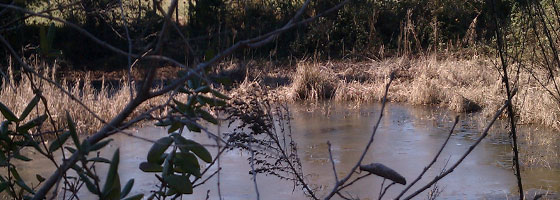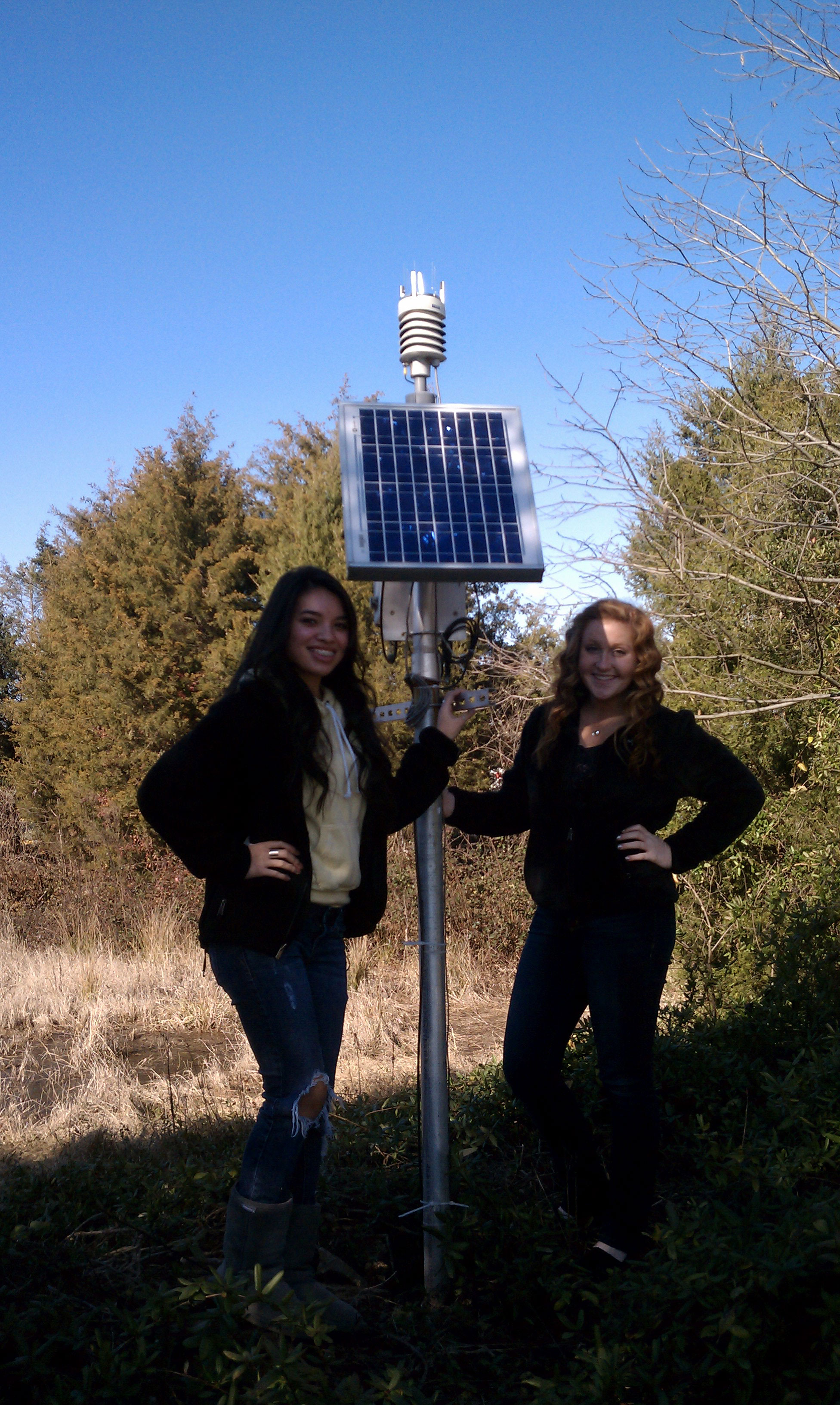New high school benefits from native pond

Patriot High School (PHS) students have a different view from the windows of their brand new school than many high school students. The school was built on 94 acres of farmland in northern Virginia, some of which is still used as a cow pasture and for growing crops. Though students won’t be driving cattle any time soon, they will acquire use of a pond that was left intact just outside the school. Surrounded by trees, the pond is a draw for local wildlife and an educational resource waiting to be tapped. Using a weather station near the pond equipped with real-time data telemetry, PHS teachers will extend their curricula beyond the classroom and challenge students with hands-on learning.
Before the high school opened in September, Prince William County contacted Wetland Studies and Solutions, Inc. (WSSI), a natural resource consultant, to assess possible uses of the pond. To monitor changes in the pond and its surrounding environment, WSSI installed a Vaisala multi-parameter weather sensor which sends data via radio telemetry to a computer equipped with iChart software. The weather sensor measures wind speed and direction, precipitation, barometric pressure, temperature and relative humidity. WSSI also installed a NexSens water level sensor which will helps monitor water levels in the pond. PHS science department head Christie Eikhoff hopes the school can eventually use the pond as a wetland.
“I’m glad we have something hands on so (the students) can look at that kind of data,” Eikhoff said.
 WSSI turned control of the weather station over to PHS at the beginning of December. With all the adjustments that come with a new school, science clubs and AP classes are still in their formative stages. Eikhoff intends to integrate the weather station and use of the pond’s ecosystem into AP Biology and AP Environmental classes. She also hopes the local wildlife around the pond will lend itself to use by elementary school classes.
WSSI turned control of the weather station over to PHS at the beginning of December. With all the adjustments that come with a new school, science clubs and AP classes are still in their formative stages. Eikhoff intends to integrate the weather station and use of the pond’s ecosystem into AP Biology and AP Environmental classes. She also hopes the local wildlife around the pond will lend itself to use by elementary school classes.
“We want to make sure all of our students can use it, no matter what class they’re in.” Eikhoff said. “We want them to start thinking on their own and if they can do that, then they can start analyzing and coming up with their own ideas.”
PHS teachers will use the pond to spur classroom conversations that do not surface from a textbook. Students will be able to see how human activities influence an aquatic ecosystem, how plants and animals interact and whether or not the pond can sustain itself. Currently, teachers are using their own laptops to receive monitoring data. Eikhoff hopes to soon have a computer dedicated to receiving real-time data from the station.




0 comments